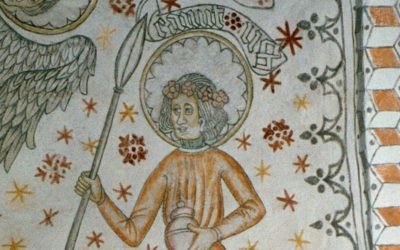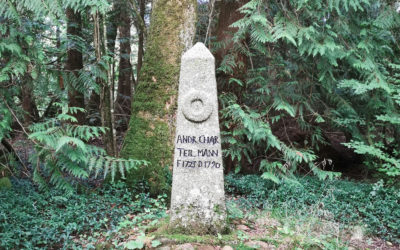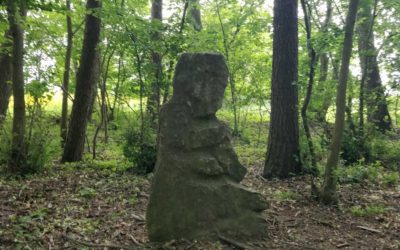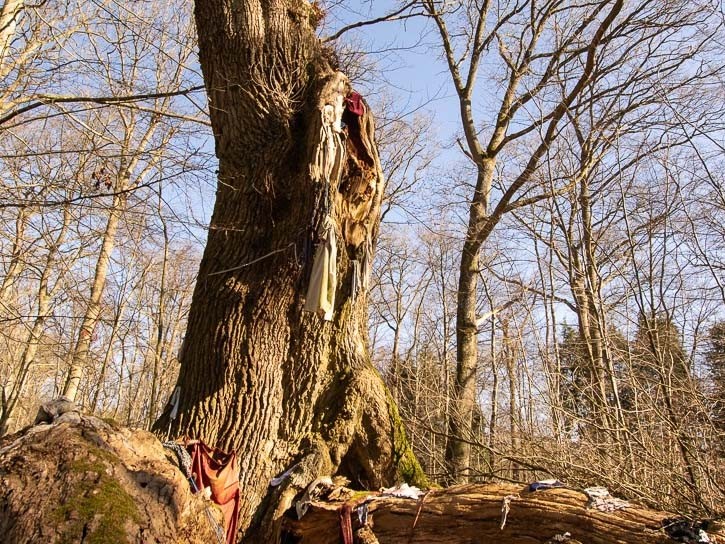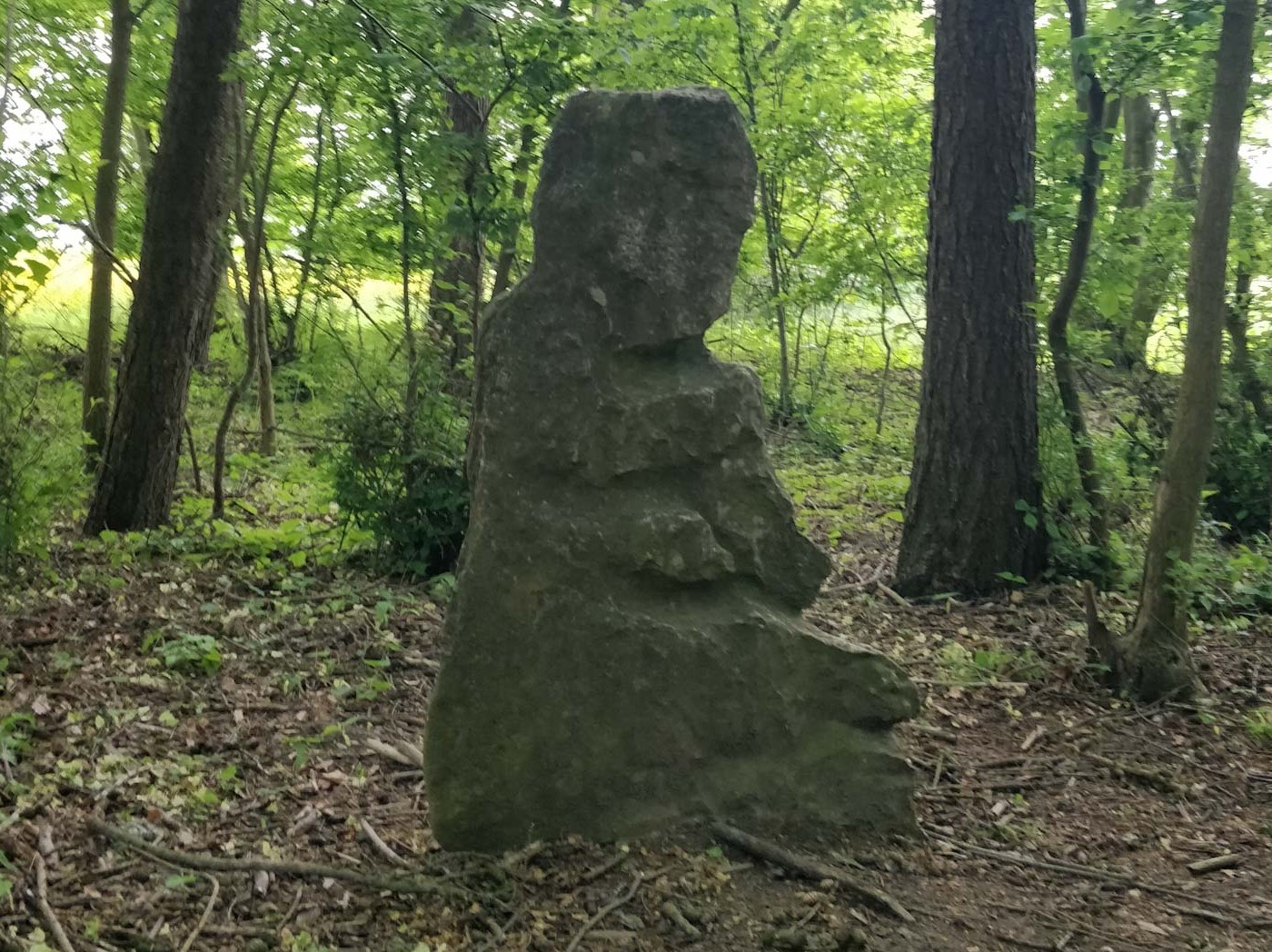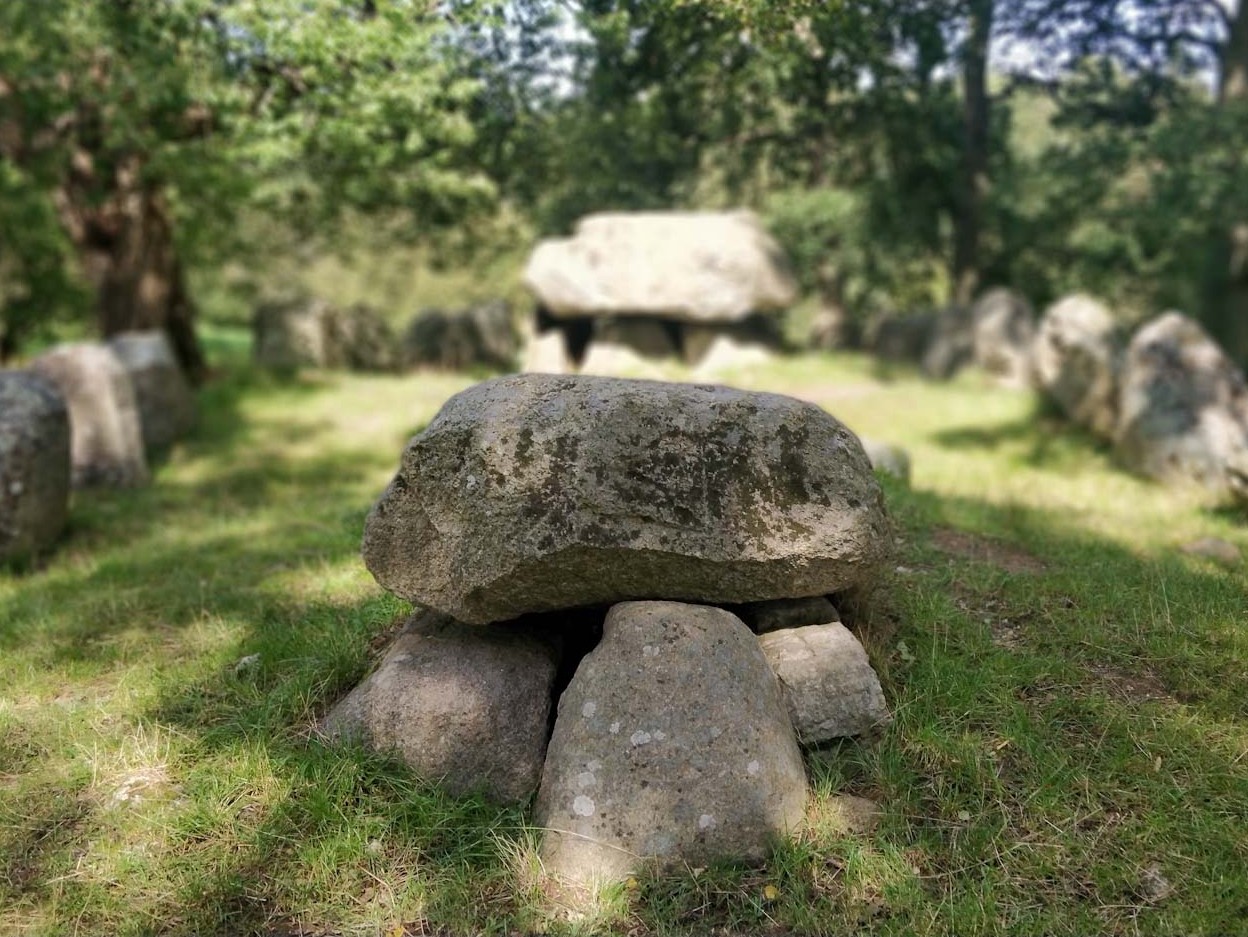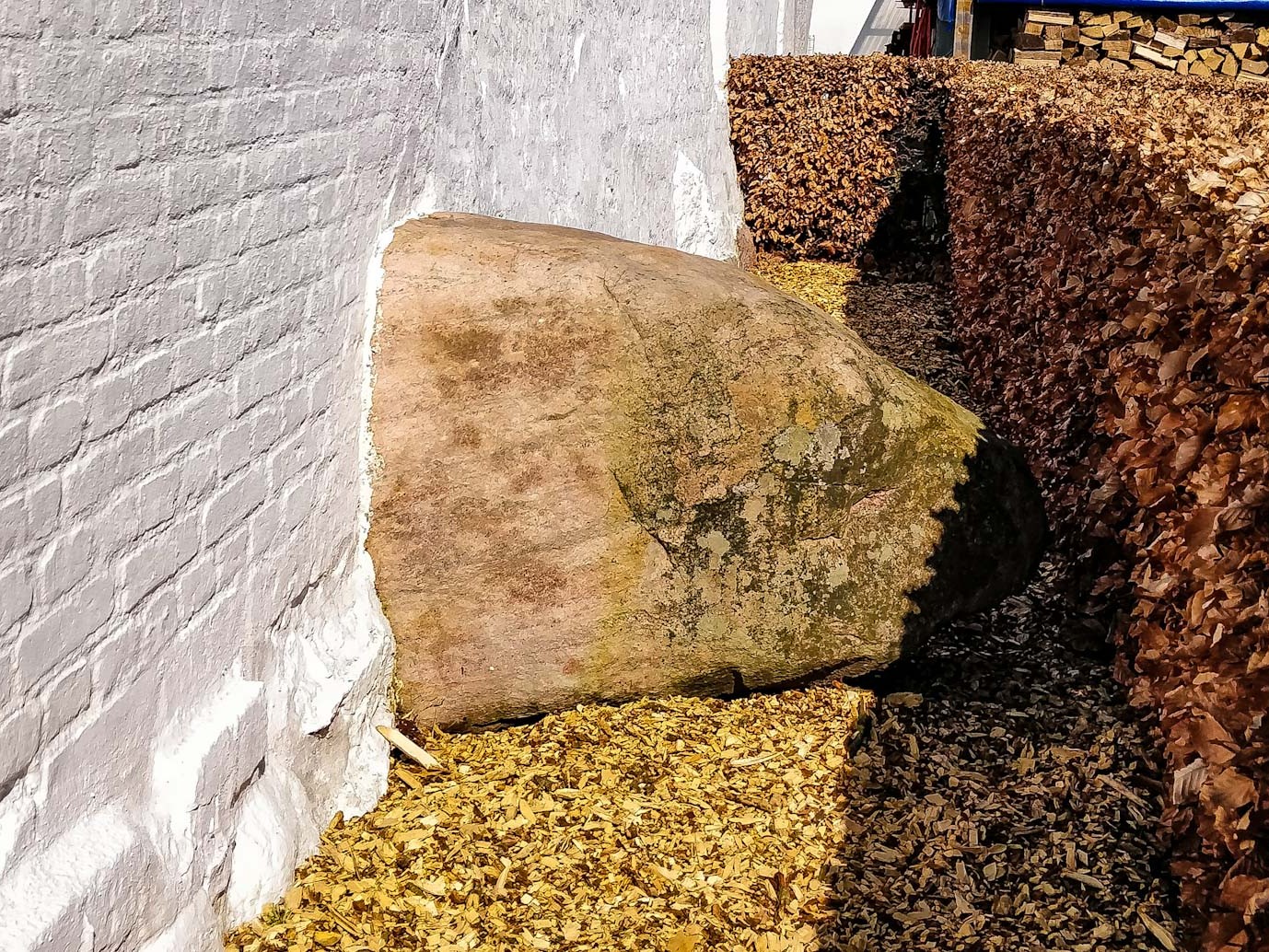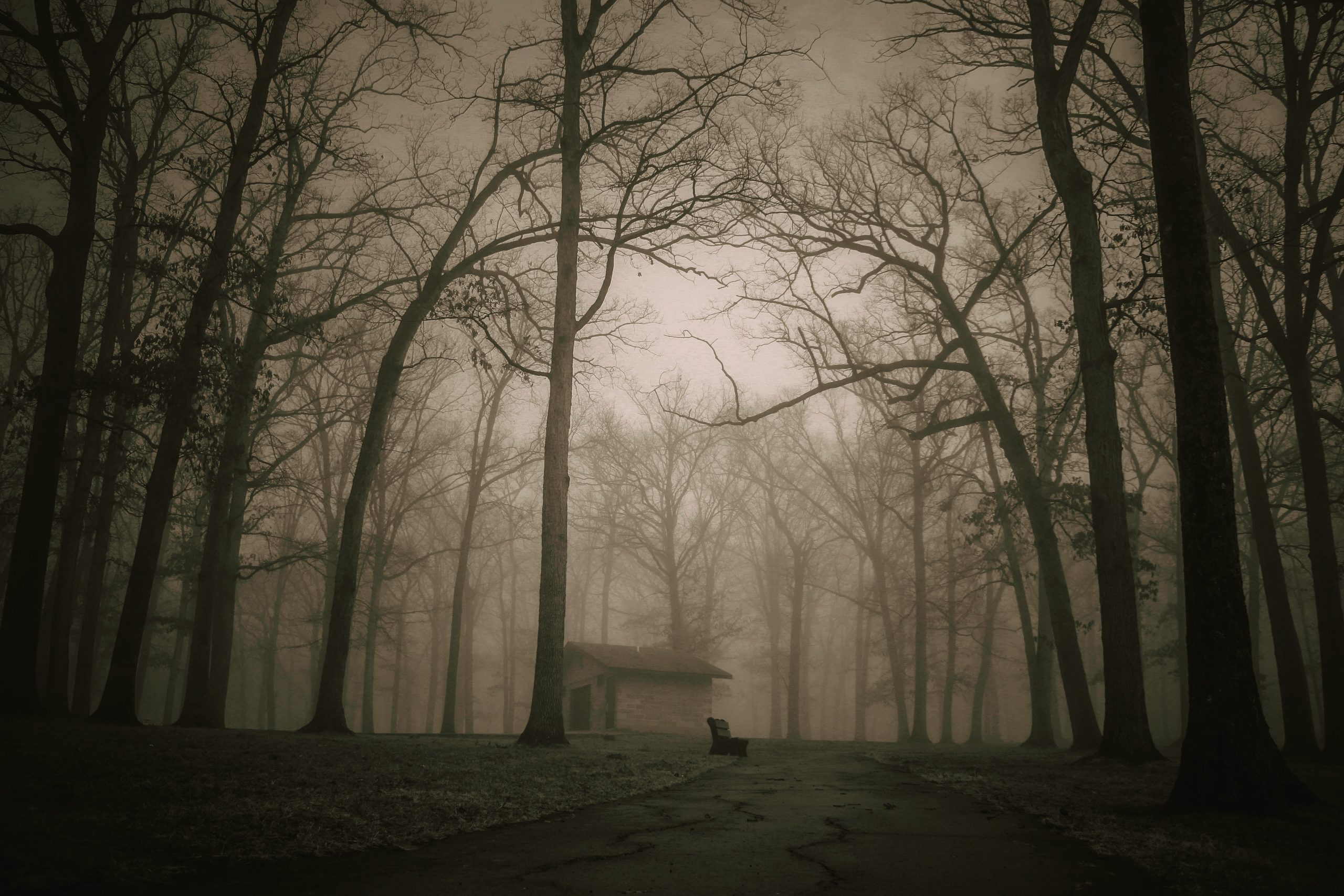Parking: There are numerous free parking spaces at the church
Good to know: The church and surrounding area is in itself well worth the visit
Nearby attractions:
Legends surrounding the head
Legend has it that “Ole Bulder” lived in Tranemosen (“The Bog of Cranes”) a boggy area northeast of Raklev. All accounts we have describe him as a menacing character of some sort or other: a tyrannical lord, a pirate chief, or even a Jotun (a race of chaotic deities in Norse mythology similar to the Titans in Greco-Roman myth often translated as “giants”), who fiercely controlled the surrounding land for many years. Some stories also mention him as having superhuman strength and being of giant stature. Thus, the head on Raklev church is supposedly an indication of his true height, placed in the spot where his head would be if he was standing upright against the church. Other stories say that it was Ole Bulder himself that built Raklev Church.
The tale of Ole Bulder’s demise includes some even more fantastic, fairy tale-type elements. Thus it is said that one day the local farmers, finally fed up with the brutal giant, decided to lay a trap for him, consisting of a cow hide with peas underneath. When Ole Bulder stepped in the hide, he slipped and fell flat to the earth, where the farmers could now overtake him and cut off his head, and afterwards place it on the church gable.
The stone head has also been the center and subject of various folk medicinal practices throughout the years. It was said that rain water that had struck the head could heal various ailments if you drank it, and that the ground underneath the head could be dug up and used in amulets, to prevent disease among the cattle.
Fact vs. fiction
No doubt the legend of “Ole Bulder” is a composite of several different stories that have evolved over centuries. It is is extremely unlikely that the head on Raklev Church was ever meant to depict or commemorate any such personality, however mundane he might originally have been compared to the later legends. The head itself is done in Roman sculptural style, which was popular in Denmark from the mid 11th until the mid 13th century, when the Gothic style took over. His indicates that the head could be a remnant of the medieval Kalundborg church, Saint Olai. If so it is likely a depiction of Jesus or even of Saint Olai (Olav The Holy) himself, one of the most ubiquitous Nordic saints. This would make sense, since Raklev Church also was inaugurated to Saint Olai. Furthermore this would show a link between Olai/Olav and Ole, all derived from the same name. “Bulder”, which means rumbling, could show a connection to Thor, the god of thunder and in fact Saint Olai ended up replacing Thor in the Nordic tradition. The elements of Norse mythology also shine through in the more fantastic legends about Ole Bulder, where he is described like a Jotun.
However, several things indicate that there was a person in the Raklev area that could really have put some scars on the peasants of the day. The early 14th century was a pretty dark time for Denmark: The country was mostly pawned and under the jurisdiction of Holstein, with several local areas controlled by members of German nobility via their appointed stewards. This was the situation in Raklev as well. In 1325, a Holsteinian by the name Helrich Beinfleth took control of the land near Tranemosen and there are indications of him being a very rough steward. Besides that, he actually had a background as a pirate. Beinfleth ruled the Raklev area for almost two decades, so if he really was as brutal as historical sources indicate, he could indeed be the early inspiration for the Ole Bulder legend.
This theory is supported by the fact that remnants of what could be a castle or fortress has been found around Tranemosen over the years. 150 meters northeast of the farm Grønvang, for example, several building materials from medieval times have been excavated in recent years. Whether this is in any way connected with Beinfleth, we don’t know. But it indicates that the stories about a menacing pirate lord living in Tranemosen aren’t as far fetched as they might seem at first.
But even if there is a connection between this and the infamous stone head, we know that “Ole Bulder” was not the founder of Raklev Church. This honor goes to Raklev parish’s first Lutheran priest, Melchior Jensen, and is quite well documented. That a local lord, let alone a pirate, would have been depicted on a church also seems absurd. But one thing is for sure: there are quite a few mysteries surrounding this notorious, old stone head, still waiting to be uncovered.
Select sources
- Jens Nielsen – Sognets Historie 1 & 2 (Raklev Sogneblad #2 & #3, 2018)
- Kirsten Dandanell – Sørøvere i Tranemosen? (Jul i Kalundborg #53, 1990)
-
Thorkild Gravlund – Herredsbogen Sjælland
- Victor Hermansen – Træk af Kalundborgs Historie i Middelalderen (Fra Holbæk Amt, 1934)
Tags
I samme kategori…
Knud Lavard’s Haraldsted
Knud “Canute” Lavard is one of the most important saints of medieval Denmark. Today, however, the large majority of the population only recognizes his name because it adorns several streets throughout the country. But the memory of Knud lives on in the Haraldsted area, outside Ringsted
The Teilmann Manesten
Located deep within the woods of Nørholm in Western Jutland stands one of the few remaining “manepæle” in Denmark, with several spooky legends surrounding it
The Stone Man
At the end of the 19th century, Danish railway workers excavated a strange stone that resembled a masculine, seated figure



